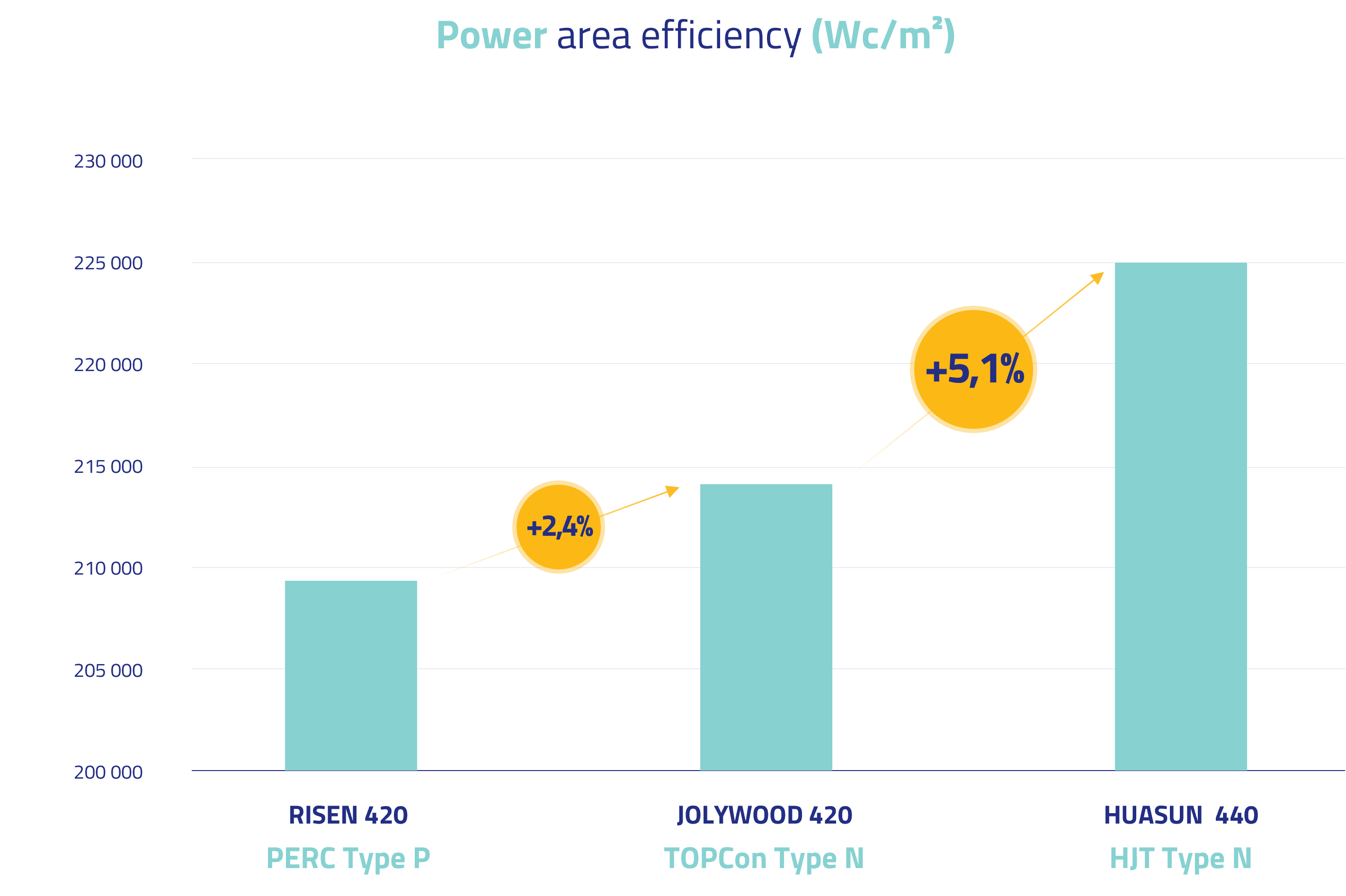Feedgy Lab
Innovation serves our beliefs. It translates our vision into a strategy for developing new services for our customers, which will benefit the entire industry.
R&D adapts to both new uses and new markets and relies on the most advanced technologies in artificial intelligence and photonic physics.
Innovation at Feedgy in a few numbers:

Artificial intelligence is a field that combines computer science and data sets to enable problem-solving.
Photonics physics is defined as the science of generating, controlling, and detecting light.
- Historically, in a context of high guaranteed feed-in tariffs for 20 years by the state, investors first sought to reduce CAPEX.
- Today, as part of the electricity market, investors and asset managers are looking to reduce LCOE and maximize the overall performance of solar assets.
In this new context, the challenge is to have the lowest possible levelized cost of electricity (LCOE*) to increase profitability.
* The LCOE (Levelized Cost of Energy) is a measure of the total cost of energy production for a given installation. It takes into account all costs related to a system over its lifetime with a ratio of costs referred to as 'discounted' costs: production costs divided by the quantity of energy produced.
Feedgy has focused its R&D on two complementary pillars
Digital
Evaluate the performance level of any solar installation.
Qualify and quantify any potential anomalies.
Photonics Physics
Boost its production, performance, and lifespan.
Our goal: Reduce the LCOE, produce more, at a lower cost, and for a longer duration.
Digital: Energy Management and LCOE Reduction
For several years, Feedgy's approach has relied on the combination of algorithms with innovative instrumentation to enrich decision support and continuously provide new services.
Originally based on theoretical models, Feedgy transitioned to artificial intelligence in 2021. This technology is more precise, faster, more stable, and, most importantly, it opens the door to prediction:
- Production prediction
- Maintenance prediction
- For us, digital is the bridge to a world of services. That's why Repowering at Feedgy means digitizing to give our customers access to this world. Firstly, by connecting to the monitoring system, it enables you to diagnose and see to what extent Feedgy can boost performance. This free service is a decision-making tool.
- If the customer wishes to go further, our solution can qualify the type(s) of defect(s) at the root of the underperformance, and thus assess the impact of each on production and the associated loss of sales. Artificial intelligence technology makes diagnosis fast and accurate. This precision is necessary to project and master all the keys to a Repowering intervention.
- Once Repowering is complete, we remain connected for as long as the customer wishes, enabling him to optimize maintenance costs. Feedgy has also developed advanced monitoring tools, enhanced by artificial intelligence. With precise real-time fault detection, the solution goes beyond market tools and moves towards the predictive maintenance so eagerly awaited by the profession.
- Thanks to Machine Learning, the management of large volumes of data and our solutions for predicting the performance of the monitored plant, the results are always as accurate as ever. In concrete terms, our customer and his maintainer receive regular follow-up reports to help the latter ensure quality service.
This level of responsiveness and precision enables effective intervention by professionals in operations and maintenance (O&M). It also reduces the downtime of the plant, thereby avoiding a significant drop in production, which would have resulted in substantial revenue loss.
2. Photonics: Reducing LCOE
The word "photovoltaic" is composed of "photo," which expresses light, and "voltaic" for electricity. However, solar market players only focus on electricity. At Feedgy, we believe that the treatment of light is underutilized. Indeed, light is the fuel for the solar panel. Mastery of the light spectrum opens the door to additional reserves, synonymous with overproduction, but also to new applications, such as agrivoltaics.
Feedgy is conducting research on the optimization of the optical components of a solar installation, relying on the mastery of energy through photonics engineering: photonics*
* The science of generating, controlling, and detecting light
More concretely,
it involves offering our clients the best panels on the current global market and, for a given panel technology, producing more kWh. It's also a way to improve agrivoltaic techniques.
By partnering with the most efficient manufacturers in the market, we enable our clients to benefit from the highest power per square meter.
- From its inception, Feedgy was among the first in France to offer TOPCon technology, the successor to PERC, for installations over 100 kWc. As a leader in Repowering, Feedgy leverages its clients' high electricity purchase tariffs to make even the most advanced market technology profitable and affordable. The goal has always been to offer the best yields, the best temperature behaviors, the longest lifespans, and more. Therefore, in 10 years, our client won't be in the same situation as when we found them.
- In 2023, we made the choice to offer Heterojunction (HJT) technology to our clients. This technology brings numerous advantages and a significant increase in production.
| Characteristic | Impact | PERC type P | TOPCON type N | HJT type N |
|---|---|---|---|---|
| Bifaciality | More electricity production from the rear side | 70% | 75% | 85% - 90% |
| Temperature Coefficient | Less performance loss due to heating | -0.37% / °C | -0.32% / °C | -0.26% / °C |
| Zero LID Technology (« Light Induced Degradation ») | Less performance loss after commissioning | No | Yes | Yes |
| Module Efficienty | More production for the same surface area | Medium 19.5% - 20.5% | Strong 20.5 - 21.5% | Very strong 22% - 23% |
| Linear Degradation Rate % per year | Maintains performance over time | 0.55 over 25 years | 0.42 over 30 years | 0,375 over 30 years |
| Innovative panel architecture | Longer plant lifespan | Partially | Partially | Integrated in Feedgy panels |
| Carbon footprint in manufacturing (g eq. CO2 /W) | Environmental | 550 | 480 | 390 |


Grâce à la technologie HJT type N, lors d’un repowering à surface égale vous produisez plus d’électricité

Feedgy a établi un partenariat exclusif avec Huasun sur les projets de Repowering.
Producteur mondial de panneaux solaire de très haute qualité et à la pointe de la technologie, Huasun met aujourd’hui ses technologies au service de nos clients. Nous travaillons ensemble main dans la main pour développer des modules toujours plus performants destinés à faire du repowering la seule solution permettant de réduire significativement le LCOE.
De nouvelles technologies sont aujourd’hui proposées, pour plus de renseignements sur l’HétéroJonction et bien d’autres
Research and Development
Thanks to research and tests conducted in collaboration with research centers and other academic partners, Feedgy designs new solutions to increase the efficiency of solar panels.
Photonics to optimize production at Feedgy


Benefit from our technical expertise by exploring our Repowering offer.
Partners
Our solutions thrive on innovation through our daily collaborations with institutional research partners in France and Europe on innovative projects for the solar sector. Anchored in a dynamic ecosystem facilitated by competitiveness clusters (Tenerrdis and Systematic), Feedgy is a proactive player in the solar industry.
Through scientific partnerships such as CNRS and École Polytechnique, Feedgy accelerates photovoltaic research and provides practical applications for laboratory results. . Thanks to these collaborations, new technologies are developed and tested on our test benches.
Other actors such as BPI France, Ademe, the Ile de France Region, and InnoEnergy provide financial support to our efforts, contributing to accelerating experiments and subsequently implementing them in our clients' installations.

A Dedicated Team
At Feedgy, the innovation department is at the core of our strategy.
Feedgy's Innovation team consists of specialized engineers and Ph.D. holders in science. They dedicate their daily efforts to improving photovoltaic technologies for even greater performance . The team brings together complementary skills in photovoltaic systems, optics, photonics, artificial intelligence, data sciences, machine learning, IoT, and numerical modeling.
The work of our experts has been recognized multiple times by the industry through innovation competitions and project calls.
